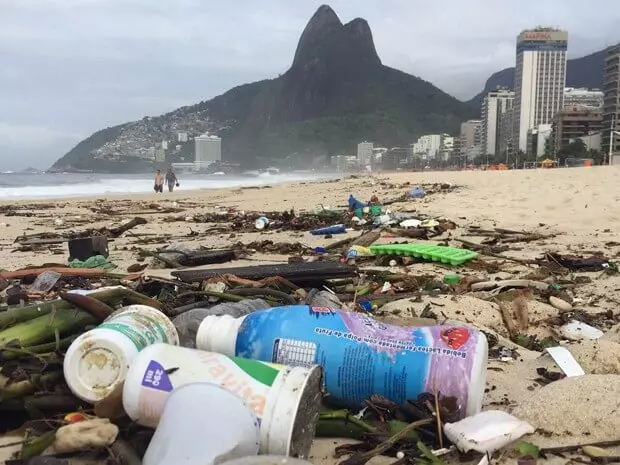A survey conducted by researchers Professional Master’s Degree in Environmental Sciences from the University of Veiga de Almeida (UVA) showed that within 12 years Rio de Janeiro started producing 363 tons of garbage per day. The volume, according to scientists, is equivalent to 2.6 phases Maracanana annually filled with litter from the ground to the top. The study showed that 40% of waste is made from recyclable materials, 16% is paper or cardboard; 17.8%, plastic; 3.3%, glass; and 2.9%, metal.
Although almost half of Rio de Janeiro’s solid waste is made up of recyclable materials, the state has a low recycling rate, according to 2022 data. National Solid Waste Management Information System (SINIR)in: Ministry of Cities and National Sanitary System (SNIS). The national average for material reuse is 1.67%; In Rio de Janeiro, it is 0.49%, and the average for the city of Rio is even lower at 0.37%.
Comparing IBGE 2022 census data Solid Waste State Plan of the State of Rio de Janeiro (Pers)Based on the 2010 census and launched in 2013, between 2010 and 2022, waste generation in the Rio de Janeiro area increased from 16,970 tons to 17,333, registering an increase of 2.14% in absolute annual terms. Production of 130,680 tons of garbage.
“From an environmental point of view, there are impacts related to the potential impacts of inadequate disposal; economic, related to the costs associated with waste collection, transport, final destination and final disposal; and social when we realize that despite efforts to reduce, reuse and recycle waste, the society of Rio de Janeiro has not yet succeeded in stopping the generation.” stated researcher, professor and one of the authors of the study, Carlos Eduardo Canejo.
The study showed that waste production m Metropolitan region and on and on capital Rio de JaneiroHowever, there were slight declines during the decade; they increased from 84.14% to 81.20%, which is 203.94 tons per day; and 145 tons less in waste generation per day under metropolitan and capital brands respectively. In contrast, city Sissy boy from 106.67 to 167.71 tons of this waste per day, increasing by 54.79%.
The figures, according to the scientists, turn on the yellow light for the care of waste management in the area of Rio de Janeiro, taking into account the configuration of the population.
“Capital reduction reduces the costs of collection and final disposal, in addition to slightly increasing the useful life of the Seropedica landfill, the only waste disposal site in the capital. However, smaller towns like Marika face greater challenges in terms of increasing costs throughout the management chain and environmentally appropriate final waste disposal.” scored a goal Ricardo SoaresCoordinator and research co-author of UVA’s professional master’s degree in environmental sciences.
Cities with growing populations and still active landfills are even more vulnerable. A significant increase in the daily generation of solid waste was observed in communities with landfills. 37.4% in Italva, 31.2% in San Fidelis, 29.4% in Cambucci, 25.1% in Natividade, 24.5% in Porciúncula. % in Resende, 14.3% in Itaperuna, 12.9% in Teresopolis and 4.6% in Cordeiro.
“It is necessary to include the 2022 census data in the necessary update of the State Solid Waste Plan, which is a fundamental document for the formulation of public environmental policy for waste management in accordance with the guidelines of the National Solid Waste Policy. This survey can help update policies and guide effective decision-making by public authorities.” said Professor Ricardo Soares.
Information: See Rio
Warning:


